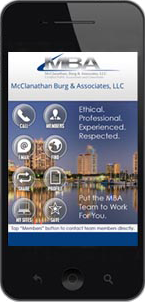Are you sure you want to take that 401(k) loan?

With summer headed toward its inevitable close, you may be tempted to splurge on a pricey “last hurrah” trip. Or perhaps you’d like to buy a brand new convertible to feel the warm breeze in your hair. Whatever the temptation may be, if you’ve pondered dipping into your 401(k) account for the money, make sure you’re aware of the consequences before you take out the loan.
Pros and cons
Many 401(k) plans allow participants to borrow as much as 50% of their vested account balances, up to $50,000. These loans are attractive because:
- They’re easy to get (no income or credit score requirements),
- There’s minimal paperwork,
- Interest rates are low, and
- You pay interest back into your 401(k) rather than to a bank.
Yet, despite their appeal, 401(k) loans present significant risks. Although you pay the interest to yourself, you lose the benefits of tax-deferred compounding on the money you borrow.
You may have to reduce or eliminate 401(k) contributions during the loan term, either because you can’t afford to contribute or because your plan prohibits contributions while a loan is outstanding. Either way, you lose any future earnings and employer matches you would have enjoyed on those contributions.
Loans, unless used for a personal residence, must be repaid within five years. Generally, the loan terms must include level amortization, which consists of principal and interest, and payments must be made no less frequently than quarterly.
Additionally, if you’re laid off, you’ll have to pay the outstanding balance quickly — typically within 30 to 90 days. Otherwise, the amount you owe will be treated as a distribution subject to income taxes and, if you’re under age 59½, a 10% early withdrawal penalty.
Hardship withdrawals
If you need the money for emergency purposes, rather than recreational ones, determine whether your plan offers a hardship withdrawal. Some plans allow these to pay certain expenses related to medical care, college, funerals and home ownership — such as first-time home purchase costs and expenses necessary to avoid eviction or mortgage foreclosure.
Even if your plan allows such withdrawals, you may have to show that you’ve exhausted all other resources. Also, the amounts you withdraw will be subject to income taxes and, except for certain medical expenses or if you’re over age 59½, a 10% early withdrawal penalty.
Like plan loans, hardship withdrawals are costly. In addition to owing taxes and possibly penalties, you lose future tax-deferred earnings on the withdrawn amounts. But, unlike a loan, hardship withdrawals need not be paid back. And you won’t risk any unpleasant tax surprises should you lose your job.
The right move
Generally, you should borrow or take hardship withdrawals from a 401(k) only in emergencies or when no other financing options exist (and your job is secure). For help deciding whether such a loan would be right for you, please call us.
© 2016




